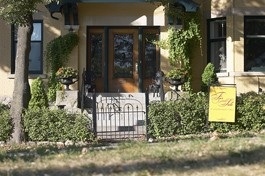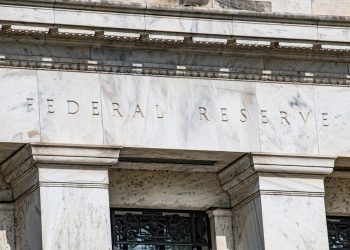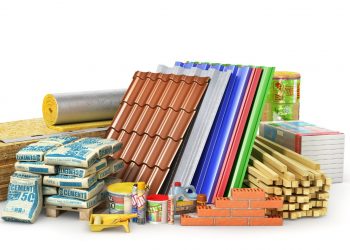 RISMEDIA, July 7, 2009-(MCT)-Looking to move up, Cheryl and Jeff Wortzel put their Midtown, Tucson home on the market in December. With two young boys sharing a room, the Wortzels want more space than their two-bedroom home in the Blenman-Elm Neighborhood can offer.
RISMEDIA, July 7, 2009-(MCT)-Looking to move up, Cheryl and Jeff Wortzel put their Midtown, Tucson home on the market in December. With two young boys sharing a room, the Wortzels want more space than their two-bedroom home in the Blenman-Elm Neighborhood can offer.
Six months, two price cuts and a handful of low-ball offers later, they are still trying to sell.
“We are not in a rush, and we have a bottom line,” Jeff Wortzel said. “We can’t go to the next house until this one sells, and if we want to move, we have to be patient.”
The stasis the Wortzels find themselves in-hoping to buy another home, but needing to sell their own home first-pretty much sums up Tucson’s resale housing market: Foreclosures are king, and traditional sellers struggle to compete.
“This is one of the roughest resale markets that I’ve ever seen,” said prominent “green” builder John Wesley Miller, who is trying to divest a four-bedroom, three-bath Foothills home that he took in trade about a year ago as part of a sale.
Miller first listed the home at $450,000, which was right at the appraised value at the time. A year later, he’s down to $375,000, the new appraised value.
“It’s a two-story, but at $375,000 for a Foothills house it’s a cheap price,” he said. “So I am encouraged that we are going to be able to sell it probably in the next month or so.”
Listing brokers say the key to selling a home in this down market is to be realistic about pricing, something many homeowners, who saw their values surge during the housing boom, just aren’t willing to do.
In many cases, sellers might be better off pricing low, which could potentially lead to multiple prospective buyers bidding on a property, the brokers say.
“To bring a home on the market and just chip away at the price, what happens is buyers start saying, ‘Gosh, there is something wrong with that house,’ ” said Rosey Koberlein, CEO of Long Realty Co. “The danger in today’s market is if you are overpriced, even in the smallest percentage, what you are doing is helping your neighbor sell their house.”
Competing with foreclosures
The Wortzels knew what they were getting into when they decided to put their home, near East Elm Street and North Country Club, on the market.
They knew about the glut of foreclosures and declining values. But having bought their home in 2004 for $215,000, they had some equity to work with and saw an opportunity to move into a bigger home.
Over the span of about 40 showings, they’ve dropped the price from $285,000 to $255,000. That still puts the home at $177 a square foot, but in their view they have pretty much hit a bottom price point that would allow them to move up. The listing price, their brokers said, is below the comps.
“Every proceed from this house is a down payment,” Jeff Wortzel said, sitting at their dinner table at sunset recently.
The hardest part about waiting for a buyer?
Keeping the home clean day after day with two small boys.
“We have a system,” Cheryl Wortzel said. “Everything has its place, and the night before we put it all away.”
With so many foreclosures on the market, the low-ball offer is in vogue as potential buyers try to leverage the market for a better price.
“There are a lot of bottom feeders in town trying to steal property,” said Miller, the builder.
But neither Miller nor the Wortzels are desperate to sell. The Wortzels like their home, its prime location and updated kitchen and large backyard.
Miller has plenty of equity in the home, and is in no rush to sell.
It’s easy, though, to understand why buyers would try to leverage the market to score an exceptionally low price-even if the home is already priced at market rate.
Foreclosures have been making up about a third of all resales in the Tucson market, and the median sales price for a bank-owned home in May was $122,000, said housing analyst John L. Strobeck, of Bright Future Business Consultants.
Meanwhile, the median sales price for traditional resales-without foreclosures-in May was $180,000.
And the foreclosures keep coming. This year there were 2,000 more foreclosures in Pima County through May, and more than 5,000 properties in default, putting them in imminent danger of foreclosure, numbers from the Pima County Recorder’s Office show.
Signs of stability
Although the foreclosure wave has been strong and steady, Tucson’s housing market has seen some positive, stabilizing signs over the past few months.
The median home price has been steady, hovering around $165,000 since December, according to the Tucson Association of Realtors Multiple Listing Service. Back in May, it jumped to $170,000.
Meanwhile, the number of homes for sale has continued to fall, dropping to 6,506 in May.
But much of the market activity has been happening at the lower price points where, no surprise here, many foreclosures are selling.
What this means is while there are signs the housing market might be forming a bottom, it could be some time until “move-up” buyers start buying more expensive homes.
“There are probably two parts to this,” said University of Arizona economist Marshall Vest. “The first is I can see light at the end of the tunnel. That is housing prices are getting to level off, and they are no longer in free-fall. The second part is those very expensive houses, that market is pretty much moribund still.”
Aggressive pricing
Tell Bill Castaneda about moribund.
His Northwest Side home has been on the market for 18 months. During that time, he’s dropped the price from $339,000 to $250,000, moving with the market.
“We are at that point where that’s about it,” he said. “We’ve hit that rock-bottom price.”
Castaneda put his four-bedroom, three-bath home up for sale after he and his ex-wife separated. He knew about the challenges in the market, watching as foreclosures would pop up in his neighborhood and then sell at fire-sale prices.
“There was a lot there, but most of them have been picked up and purchased,” he said.
The house is gaining some interest since the price has dropped to $250,000, or $109 a square foot, but because of the length of time on the market, Castaneda is probably battling not just declining prices but also questions about why the house hasn’t sold.
“Buyers are aware of the market, and they expect to get great deals,” said Rob Lamb, a listing broker with Long Realty who has the highest number of listings in the metro area.
The only exceptions to aggressive pricing, Lamb said, are when homes have “excellent location, or great condition.”
On those homes, “you can still get top dollar,” he said.
Finally, holding out for a high price may in the long run cost sellers who are looking to move up, Lamb said. “If you did sell for what in your mind was a loss, and you were able to buy a better house, you are going to appreciate more equity in that,” he said.
Castaneda and the Wortzels seem to think they’ve hit their own bottom point for pricing. Time will tell, though, if the market agrees.
Suffering Sellers
It’s a tough market in which to sell a home, but sometimes sellers make it harder on themselves. Here are some seller tips, courtesy of Rosey Koberlein, CEO of Long Realty:
–Don’t assume if you price high, you can always come down once an offer is made. Price too high, and offers won’t get made. Prospective buyers will move on thinking the seller is unreasonable. “Buyers want to see something competitively priced to give them a reason to make an offer,” Koberlein says.
–The most important time for a home is its first two to three weeks up for sale. That’s when the most potential buyer activity will take place on a listing. “That’s why it really needs to be competitively priced. We have homes right now where we are experiencing multiple offers,” she says. Price the home too high and it will sit on the market, and prospective buyers will assume something is wrong with the property.
–Have your listing agent show you comparable homes on the market. That way, sellers know what they are competing against and can price the property more accurately.
Financing
Prospective buyers shouldn’t be surprised by tighter financing.
“About the only mortgage money out there is for conforming loans,” says University of Arizona economist Marshall Vest. “There isn’t any money available for jumbos (loans of $417,000 and up).”
Milton Dellossier, of Wells Fargo Home Mortgage, says there is money to lend to prospective buyers. He said buyers can either pursue FHA loans, which require 3.5 percent down, but in most cases they should expect to put 20 percent down.
“Essentially we are going back to the way we did things a few years back,” he said.
Prospective buyers will have to show proof of income, make a down payment, get a full appraisal and go through a credit check.
The bottom line: Because Arizona is a declining market, some kind of down payment will always be required.
Did You Know
Home sellers have a patron saint.
For generations, home sellers have buried 4-inch statues of St. Joseph upside down in their front yards, next to their for-sale signs, hoping he’ll help. A prayer must be said, too.
The statue costs about $6 and comes with a prayer card and instructions. Susan Dowler, owner of Sonoran Saints, says sales are way up in these tough times. She buys 400 saints at a time, and usually sells out in about six weeks.
“I would say people are trying more. They only need one, but some people are buying four or five to try to sell their house,” Dowler said.
Copyright ©2009, The Arizona Daily Star, Tucson
Distributed by McClatchy-Tribune Information Services.










